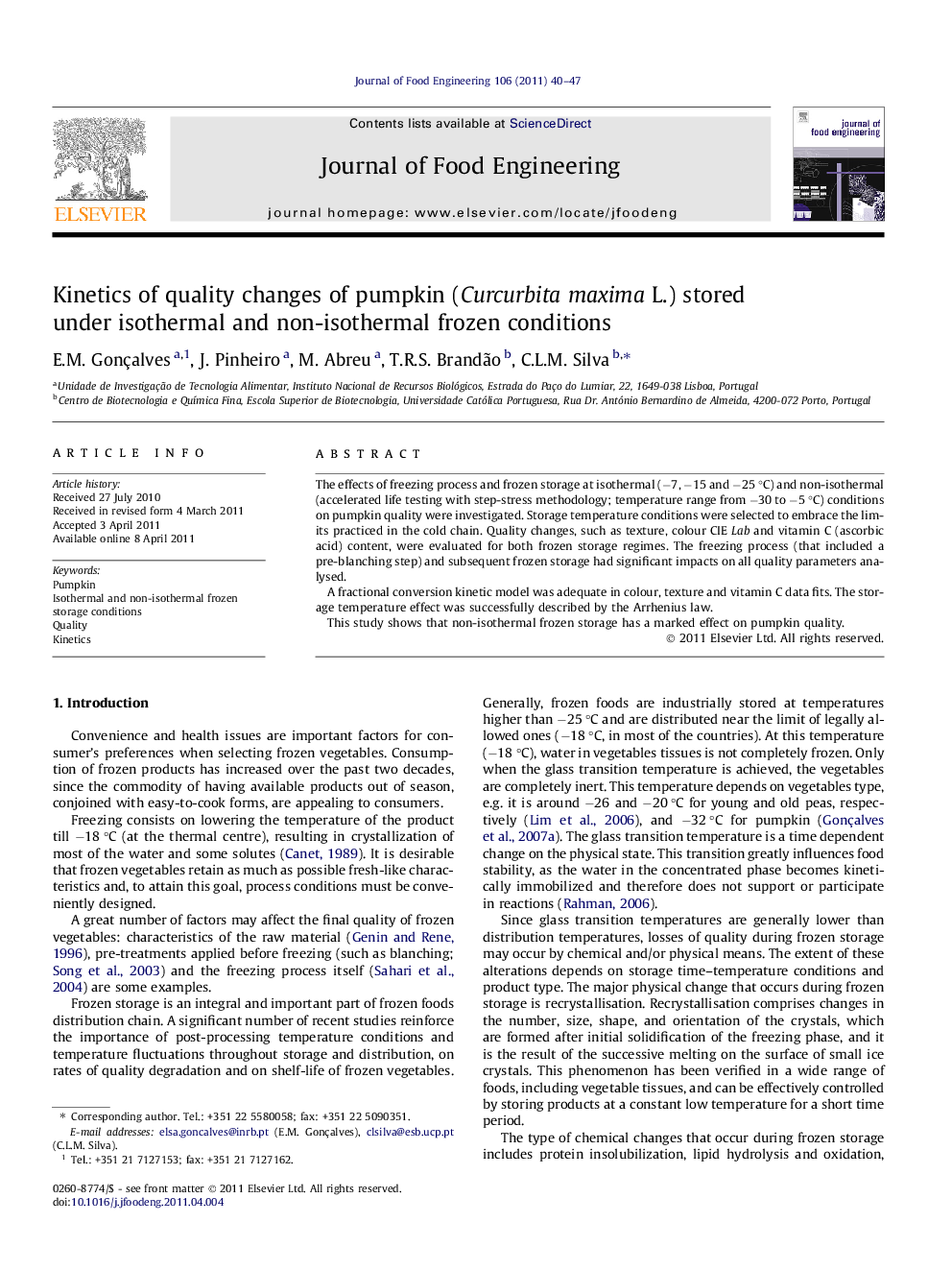| Article ID | Journal | Published Year | Pages | File Type |
|---|---|---|---|---|
| 223572 | Journal of Food Engineering | 2011 | 8 Pages |
The effects of freezing process and frozen storage at isothermal (−7, −15 and −25 °C) and non-isothermal (accelerated life testing with step-stress methodology; temperature range from −30 to −5 °C) conditions on pumpkin quality were investigated. Storage temperature conditions were selected to embrace the limits practiced in the cold chain. Quality changes, such as texture, colour CIE Lab and vitamin C (ascorbic acid) content, were evaluated for both frozen storage regimes. The freezing process (that included a pre-blanching step) and subsequent frozen storage had significant impacts on all quality parameters analysed.A fractional conversion kinetic model was adequate in colour, texture and vitamin C data fits. The storage temperature effect was successfully described by the Arrhenius law.This study shows that non-isothermal frozen storage has a marked effect on pumpkin quality.
